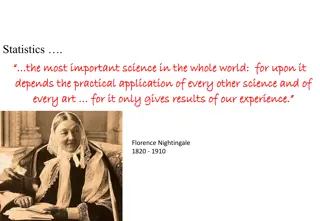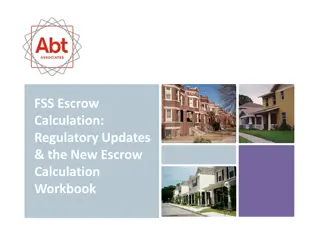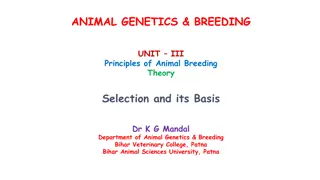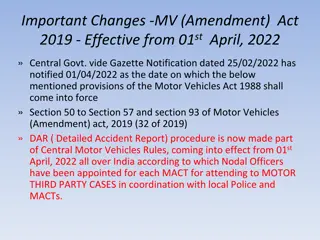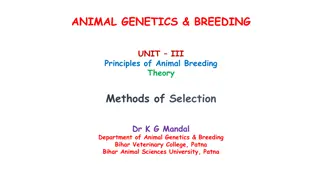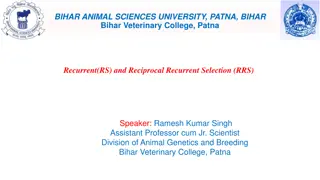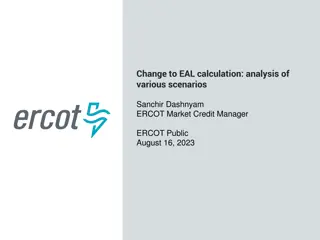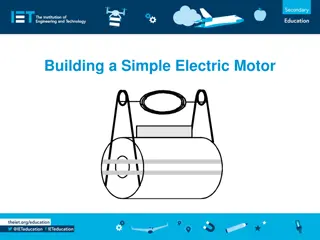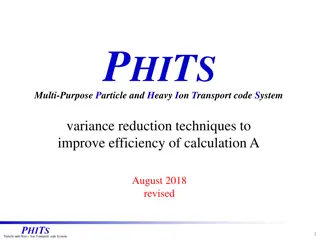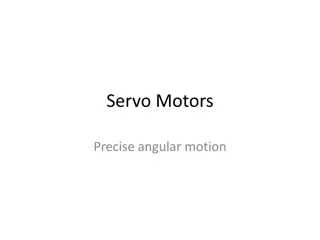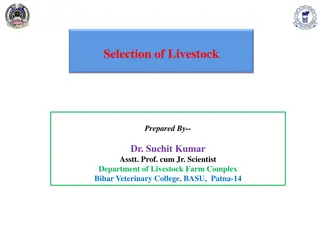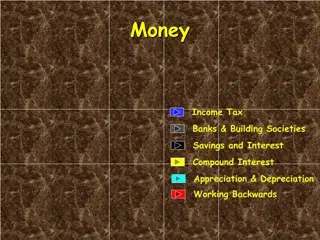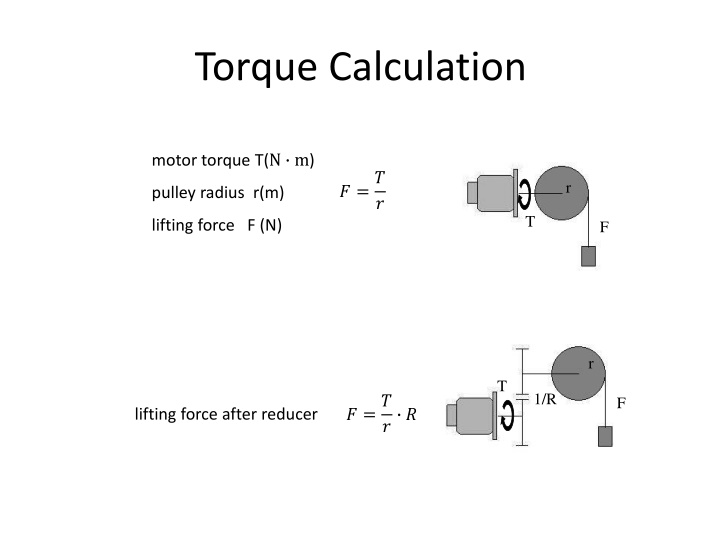
Engineering Calculations for Motion Control Systems
Explore torque and inertia calculations, servo motor selection principles, and an example calculation for selecting a servo motor and reducer based on load requirements and speed considerations. Illustrations and formulas are provided to guide you through the process.
Download Presentation

Please find below an Image/Link to download the presentation.
The content on the website is provided AS IS for your information and personal use only. It may not be sold, licensed, or shared on other websites without obtaining consent from the author. If you encounter any issues during the download, it is possible that the publisher has removed the file from their server.
You are allowed to download the files provided on this website for personal or commercial use, subject to the condition that they are used lawfully. All files are the property of their respective owners.
The content on the website is provided AS IS for your information and personal use only. It may not be sold, licensed, or shared on other websites without obtaining consent from the author.
E N D
Presentation Transcript
Torque Calculation motor torque T(N m) ? =? r pulley radius r(m) ? T lifting force F (N) F r T 1/R ? =? F ? ? lifting force after reducer
Torque Calculation F motor torque T(N m) ? = ? 2? screw lead PB (m) ?? T thrust F(N) PB F T 1/R ? = ? 2? thrust after reducer ? PB ??
Inertia Calculation 1. Inertia calculation when the load rotates ??( ) (Based on the motor shaft) 1/R L m solid cylinder ??=1 D m 8 ?? ?2 L m hollow cylinder D1 D0 ??=1 8 ?? (?02 ?12) m m ??=?? moment of inertia after the reducer ?2
Inertia Calculation 2. Inertia calculation when load moves linearly??( ) (Based on the motor shaft) M 1/R ??= ? (?? PB 2?)2 Linear motion part ??=?? moment of inertia after the reducer ?2
Inertia Calculation M3 3. Inertia calculation for belt drive??( ) (Based on the motor shaft) M1 r1 M2 r2 motor torque T(N m) roller 1 mass M1(kg) roller 1radius r1(m) roller 2 mass M2(kg) roller 2 radius r2(m) objects mass M3(kg) Reduction ratio r1/r2=1/R ??=1 2 ?1 ?12+1 2 ?2 ?12+ ?3 ?12
Servo Selection Principle continuous working torque < servo motor rated torque instantaneous maximum torque < servo motor maximum torque (at acceleration) load inertia < 3 times motor rotor inertia continuous working speed < motor rated speed
Example calculation 1 Known: disc mass M=50kg, disc diameter D=500mm, disc maximum speed 60rpm, please select servo motor and reducer.
Example calculation 1 Calculate the moment of inertia of the disc ??=? ?2 8 = 15625 ?? ??2 Assuming the reduction gear ratio = 1:R Then converted to the load inertia on the servo motor shaft as 15625 / R2 because load inertia < 3 times motor rotor inertia If you choose a 400W motor, JM = 0.277kg.cm2 15625 / R2 < 3*0.277 R2 > 18803 R > 137 output speed=3000/137=22 rpm, can not meet the requirements If you choose a 500W motor JM = 8.17kg.cm2 15625 / R2< 3*8.17 R2> 637 R > 25 output speed=2000/25=80 rpm, meet the requirements This transmission method has little resistance and ignores torque calculation.
Example calculation 2 This transmission mode is the same as the example calculation 1. The calculation of the load inertia is mainly considered when selecting the model, and the calculation formula is also the same as the example calculation 1. Summary: Rotating loads mainly consider inertia calculation
Example calculation 3 M 1:R2 D 1:R1 Known: synchronous pulley diameter D=120mm, the reduction ratio R1=10, coefficient between the load and the machine =0.6, the maximum movement speed of the load is 30m/min, the load accelerates from static to The maximum speed time is 200ms, ignoring the weight of each conveyor pulley, what is the minimum power motor required to drive such a load? the load weight M=50kg, the R2=2, the friction
Example calculation 3 1. Calculate the load inertia converted to the motor shaft ??=? ?2 4 ?12= 18 ?? ??2 because load inertia < 3 times motor rotor inertia ??> 6 ?? ??2 2. Calculate the torque required by the motor to drive the load Torque required to overcome friction ? ??= ? ? ? = 0.882 ? ? 2 ?1 ?2 Torque required for acceleration ? ??= ? ? = 0.375 ? ? 2 ?1 ?2 Servo motor rated torque > ?? max torque > ??+ ??
Example calculation 3 3. Calculate the speed required by the motor ? =? ?1 ? ?= 796 ??? According to the above data analysis, The smallest optional motor is ECMA-G31306ES.
Example calculation 4 M Known: load weight M=200kg, screw pitch PB=20mm, screw diameter DB=50mm, screw weight MB=40kg, friction coefficient =0.2, mechanical efficiency =0.9, load moving speed V=30m/min, full movement Time t=1.4s, acceleration and deceleration time t1=t3=0.2s, static time t4=0.3s. Please select the smallest power servo motor that meets the load requirements.
Example calculation 4 1. Calculate the load inertia converted to the motor shaft The moment of inertia converted from the weight to the motor shaft ??= ? (?? 2 ?)2= 20.29 ?? ??2 Screw moment of inertia ??=?? ??2 8 = 125 ?? ??2 total load inertia ??= ??+ ??= 145.29?? ??2 2. Calculate the motor speed Motor required speed ? =? ?? = 1500 ???
Example calculation 4 3. Calculate the torque required by the motor to drive the load Torque required to overcome friction ??=? ? ? ?? 2 ? ? = 1.387 ? ? Torque required for load acceleration ??1=? ? ?? 2 ? ? = 1.769 ? ? Torque required for screw acceleration ??2=?? ? ? =?? ? ? = 10.903 ? ? 2 ? 60 ?1 Total torque required for acceleration ??= ??1+ ??2= 12.672 ? ? Another way to calculate the required acceleration torque ??=2 ? ? (??+ ??) 60 ?1 ? = 12.672? ?
Example calculation 4 Calculate the instantaneous maximum torque acceleration torque ??= ??+ ??= 14.059 ? ? uniform torque ??= ??= 1.387 ? ? deceleration torque ??= ?? ??= 11.285 ? ? effective torque 2 ?1+ ??2 ?2+ ??2 ?3) (?1+ ?2+ ?3) (?? ????= = 6.914 ? ?
Example calculation 4 4. Select the servo motor servo motor rated torque T > ??and T > ???? servo motor maximum torque???? > ?? + ?? Therefore, the ECMA-E31820ES motor was selected.
Factors that Determine the Servo Motor transfer method load weight weight of transmission parts such as pulley/ball screw reduction ratio pulley Diameter / Ball Screw Pitch acceleration and deceleration characteristics running speed friction coefficient mechanical efficiency

